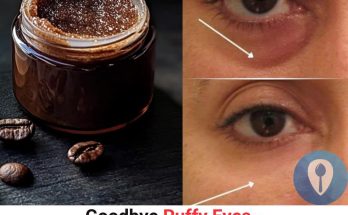Have you ever noticed light-colored or “bleach” patches on your dark underwear? If so, you might be wondering what’s causing this mysterious discoloration. While it may look like your underwear accidentally came into contact with bleach in the wash, the real reason is actually something your body naturally produces!
The Science Behind It
The culprit behind these stains is vaginal discharge—specifically, the pH level of your vagina. The vagina naturally maintains a slightly acidic environment, with a pH range of about 3.8 to 4.5. This acidity helps keep harmful bacteria and infections at bay, but it can also interact with fabrics, particularly dark-colored cotton underwear, causing the fabric to lighten over time.
Why Does This Happen?
- The vagina self-cleans – The acidic nature of vaginal discharge helps maintain a healthy balance of good bacteria.
- pH levels vary – Factors like hormonal changes, diet, and menstrual cycles can slightly alter vaginal acidity.
- Natural bleaching effect – The acidic discharge can break down the dye in fabric over time, leading to those noticeable stains.
Is It a Sign of a Health Problem?
For most women, this is completely normal and nothing to worry about. However, if you notice other unusual symptoms—such as a strong odor, unusual color, itching, or excessive discharge—it might indicate an infection or imbalance, and you should consider consulting a healthcare professional.
How to Prevent or Reduce Staining
- Wear breathable cotton underwear – This helps absorb moisture and maintain comfort.
- Opt for lighter-colored fabrics – Stains are less noticeable on white or pastel underwear.
- Change underwear regularly – Keeping yourself clean and dry can reduce prolonged contact with acidic discharge.
- Rinse underwear before washing – Running water over affected areas before tossing them in the laundry can help prevent discoloration.
Final Thoughts
That mysterious “bleach” stain isn’t a sign of poor hygiene—it’s actually a healthy indicator that your body is doing its job to protect itself! So, the next time you notice light patches on your underwear, you’ll know it’s just nature’s way of keeping things balanced.
Have you experienced this before? Let us know your thoughts below!
The Hidden Problems of PCR Testing During Pandemics

72 Hours Without a Smartphone: How It Can Change Your Brain
In a world where smartphones have become an inseparable part of daily life, researchers from Heidelberg University and the University of Cologne have made a groundbreaking discovery: just 72 hours without a smartphone can significantly alter brain activity in ways similar to substance addiction.
This study sheds light on the potential addictive nature of excessive smartphone use (ESU) and its profound effects on the brain’s reward system, impulse control, and emotional processing.
The Study: What Happens When You Take a Break from Your Phone?
The study involved 25 young adults who were restricted from using their smartphones except for essential communication. During this period, researchers observed their brain activity using MRI scans, focusing on areas associated with dopamine and serotonin, neurotransmitters responsible for pleasure and compulsive behavior.
Here’s what they found:

When participants were shown images of smartphones, their brains reacted similarly to how people with substance addiction respond to triggers like alcohol or drugs. The activity was particularly noticeable in the nucleus accumbens and anterior cingulate cortex, which are key regions for cravings and impulse control.

After 72 hours without smartphones, researchers noted changes in neurotransmitter levels, particularly in dopamine and serotonin pathways. These shifts suggest that frequent smartphone use could rewire the brain’s reward system in a way that promotes compulsive behavior.

Interestingly, while the MRI scans showed clear neurological changes, the participants didn’t consistently report cravings or mood swings like those typically seen in addiction withdrawal. Some even mentioned feeling better, though this wasn’t universal.
Why This Matters: The Growing Debate on Smartphone Addiction
The physical, social, and psychological effects of excessive smartphone use have been heavily debated in recent years. This study adds to the growing body of evidence that smartphone dependency could function similarly to other addictive behaviors.



Should You Try a Smartphone Detox?
While completely avoiding smartphones isn’t realistic, reducing screen time—even for short periods—could offer significant mental benefits.





Smartphones aren’t inherently bad, but excessive use can shape our brains in ways we might not realize. This study highlights the importance of mindful technology use and raises questions about how digital devices impact our mental and emotional well-being in the long run.





